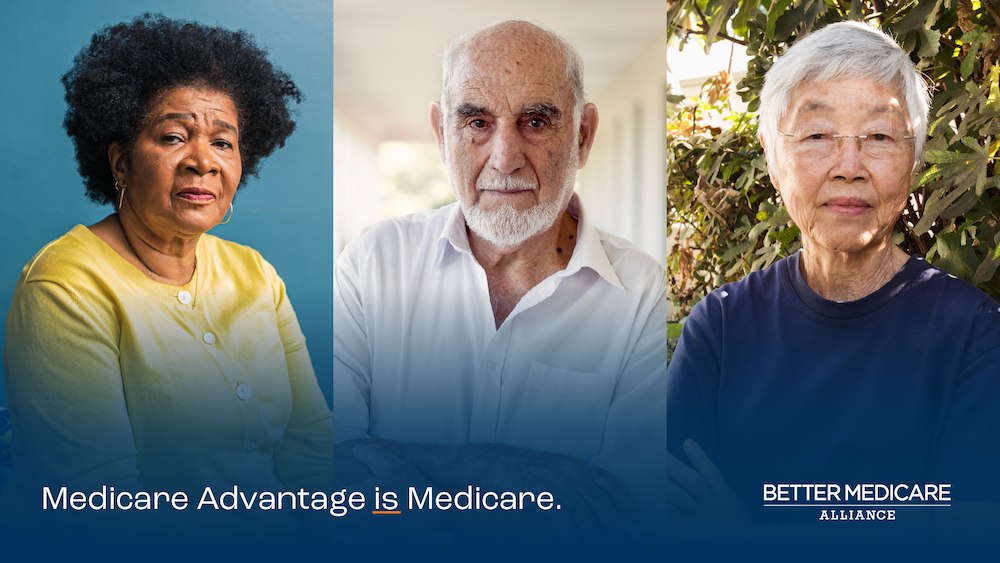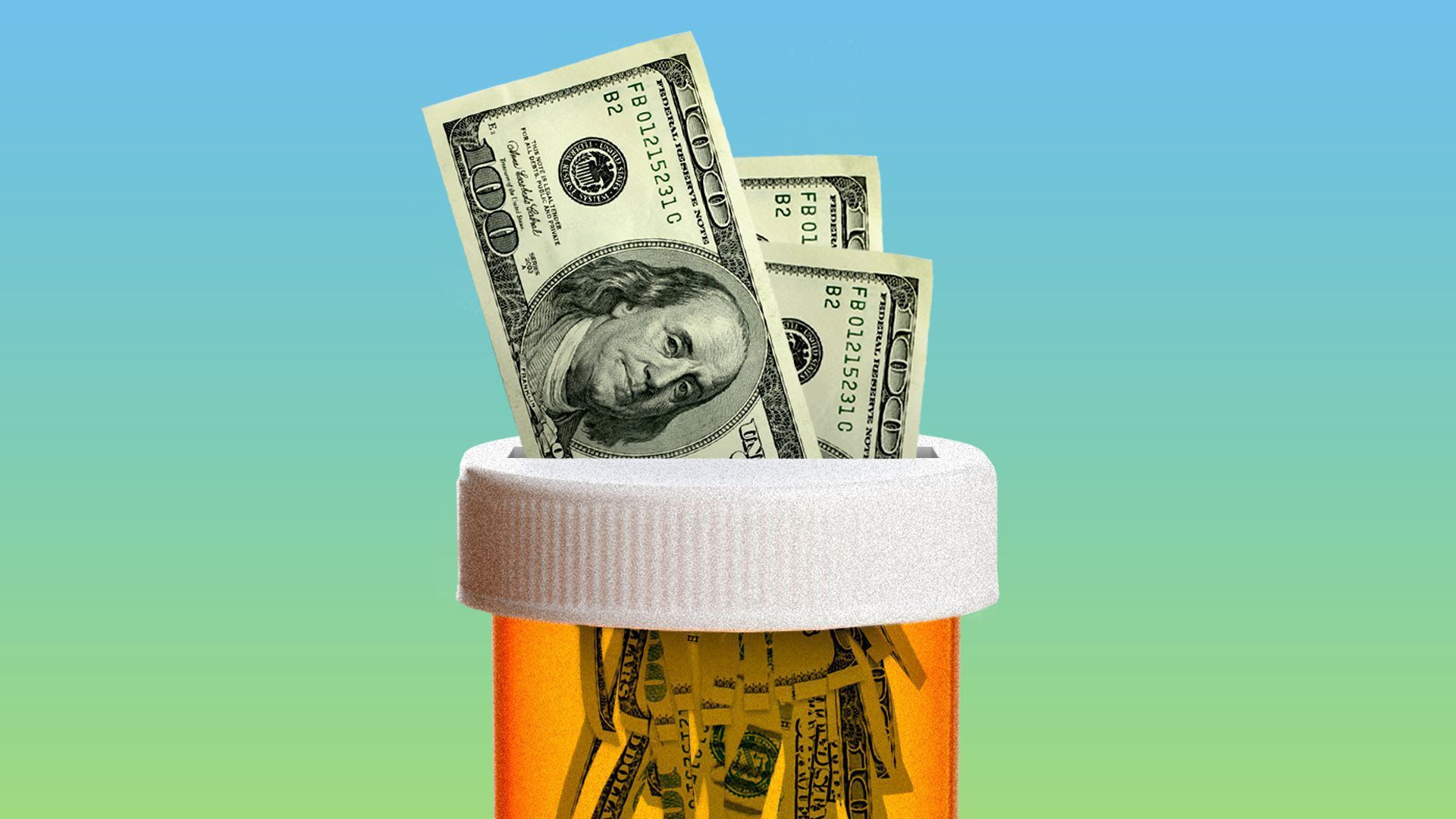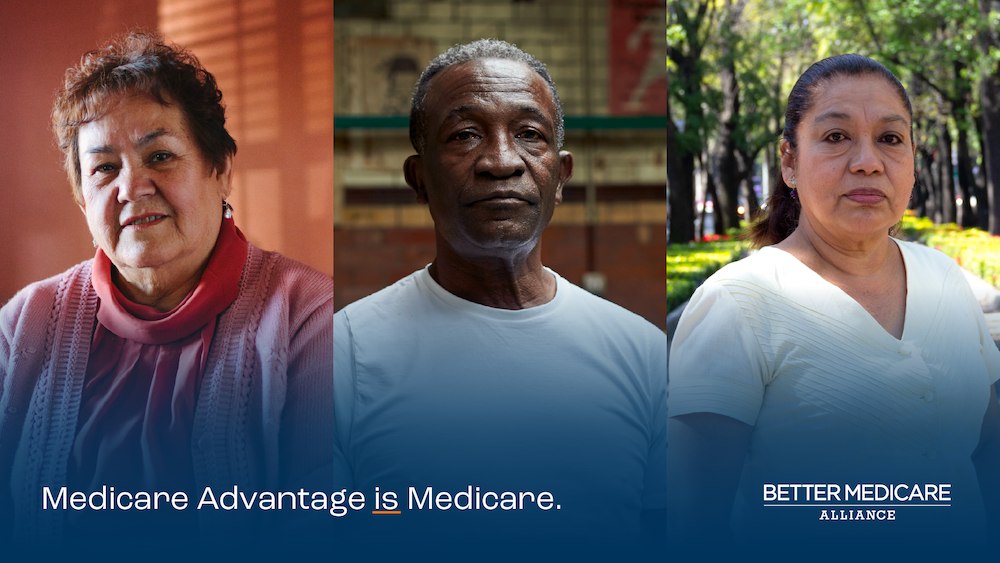| |
| |
| |
| Presented By Better Medicare Alliance |
| |
| Axios Vitals |
| By Tina Reed · Feb 13, 2023 |
| Good morning, Vitals readers. Today's newsletter is 909 words or a 3½-minute read. 💥 1 big thing: Axios is hosting our second annual What's Next Summit on March 29 in Washington, D.C., spotlighting the innovations, trends and people that are breaking boundaries and shaping our world. - Check out our speaker lineup and register to livestream the event here.
|
| |
| |
| 1 big thing: Diabetes drugs hyped for weight loss raise supply, equity concerns |
 |
|
| Illustration: Shoshana Gordon/Axios |
| |
| Buzz from celebrities and social media influencers around the off-label use of diabetes drugs for weight loss is prompting a spike in prescriptions and concerns about cost and possible shortages. The big picture: More than 5 million prescriptions were written for Novo Nordisk's injectible Ozempic or Eli Lilly's Mounjaro for weight management in 2022, up from about 230,000 in 2019, per Komodo Health. Go deeper: The drugs are part of a relatively new class that mimic a hormone in the body and regulate appetite and blood glucose levels. - Ozempic and Mounjaro have been approved by the FDA for treating Type 2 diabetes while drugs like Novo Nordisk's Wegovy and Saxenda have been approved for treating obesity.
- With their ability to help patients lose, on average, 15% of their body weight with relatively few safety concerns, prescriptions for these drugs have skyrocketed more than 2,000% in four years, data from Komodo show.
Be smart: There are concerns about who should be on these drugs, which don't work for everyone and can cost $1,400 a month out-of-pocket if insurance doesn't pay. They also can have a range of side effects, including facial drooping that's been dubbed "Ozempic face." - Consumer demand has prompted supply issues, with the FDA listing Ozempic on its list of shortages. And there are equity concerns over whether people who can afford to pay out-of-pocket are getting drugs that might otherwise go to people with greater needs.
- Insurers are scrutinizing the long-term effects of these drugs — and often don't pay for off-label uses.
- "Treatments for diabetes ... have not yet been proven to work well for long-term weight management and can have complications and adverse impacts on patients," AHIP, the insurer's lobbying group, said in a statement.
Go deeper. |
    |
| |
| |
| 2. CMS puts dispute resolution on ice |
| CMS told all parties involved in dispute resolution under the Surprise Billing Act to put their payment determinations on hold following a Texas court ruling last week. Driving the news: A federal judge ruled in favor of the Texas Medical Association on Feb. 6 in a challenge against the Biden administration and certain components of the surprise billing rule. - The rule seeks to prevent patients from getting stuck with surprise bills by requiring insurers and out-of-network providers to work out billing disputes.
- The TMA filed this lawsuit in September alleging the final rule favored insurers over providers in payment disputes.
- That resolution process has been bogged down with backlogs and has received far more disputes than expected.
What they're saying: "The Departments are currently reviewing the court's decision and evaluating current IDR processes, guidance, templates, and systems for updates that will be necessary to comply with the court's order," officials said in a statement. |
    |
| |
| |
| 3. Employers pay more for doc-administered drugs |
 |
|
| Illustration: Gabriella Turrisi/Axios |
| |
| Employer-sponsored health plans pay significantly more than Medicare for costly physician-administered drugs, threatening access to lifesaving treatments, according to a newly published analysis of claims data and Medicare files, Axios' Arielle Dreher writes. What they found: Price markups increased between 2016 and 2020 for five of the top 10 drugs that account for the most spending and more than doubled for three: the white blood cell-booster pegfilgrastim and the cancer drugs trastuzumab and rituximab. Zoom in: While high-volume drugs had relatively low unit prices, workplace plan markups over Medicare prices were especially high for these drugs, the Health Care Cost Institute analysis published in JAMA Health Forum found. - Physician-administered drug prices in Medicare are based on the average sales price. Employer-sponsored insurance prices are negotiated between health care professionals or health systems and insurers.
- The authors said policies to reduce private plan prices for physician-administered drugs are important to control overall health spending and ensure access to new products for nearly half of the U.S. population that has coverage through work.
Share this story. |
    |
| |
| |
| A message from Better Medicare Alliance |
| Proposed Medicare Advantage cuts would hurt 30 million seniors |
| |
 |
| |
| 30 million seniors rely on Medicare Advantage for high-quality care at a lower cost. Now, the administration is proposing deep cuts, meaning higher premiums and fewer benefits. With inflation so high, seniors can't afford higher health care costs. Protect 30 million seniors and stop the cuts. |
| |
| |
| 4. Addiction drug prices vary widely |
 |
|
| Illustration: Sarah Grillo/Axios |
| |
| Medication used to treat opioid use disorder has become cheaper over the last several years, but affordability can still be a problem, depending on a patient's insurance, according to a study published in JAMA Network Open, Axios' Sabrina Moreno reports. Why it matters: Experts have called for improved access to medication-assisted treatment like buprenorphine to fight the substance use crisis. But there's uneven access based on cost. Details: The CDC-led study found the overall daily average of out-of-pocket costs for buprenorphine decreased from $4.79 in 2015 to $1.19 in 2020 in their analysis across Medicaid, commercial, and self-pay. Yes, but: The cost varied widely depending on which insurance a patient had and where they lived. - Medicaid patients — which accounted for 43% of prescriptions in 2020 — had the lowest out-of-pocket cost of 10 cents while self-pay had the highest at $7.50.
- The South, parts of which have been slow to expand Medicaid, had both the highest number of prescriptions written and the greatest average cost at about $2.91 a day.
- Meanwhile, patients in the northeast saw a mean daily cost of $1.04.
The bottom line: Insurance type plays a role in how significant the financial barriers are to opioid use treatments. - Researchers suggested public health and insurer strategies to reduce the cost burden may keep more people on buprenorphine.
|
    |
| |
| |
| 5. While you were weekending |
 |
|
| People attend a demonstration in support of the Public Health System on Sunday in Madrid. Photo by Aldara Zarraoa/Getty Images |
| |
| 🪧 Hundreds of thousands marched in Madrid, protesting the regional government's management of health care services. (ABC News) 👉 Suicide rates increase after two years of decline, with disparities widening. (USA Today) 👀 A new report says nurses at an Illinois behavioral health facility engaged in abuse, including forcing patients to dig through their own feces. (ProPublica) 💰 Republican senator warns Congress must take action now to protect Medicare and Social Security. (CNN) |
    |
| |
| |
| A message from Better Medicare Alliance |
| Why the proposed cuts to Medicare Advantage will hurt seniors |
| |
 |
| |
| The proposed cuts to Medicare Advantage are unprecedented and will drive up premiums and cut benefits for seniors at a time of high inflation. Now isn't the time for cuts. The administration must protect the stability of this vital program, which 30 million seniors rely on every day. See why. |
| |
| 💕 It's that time of year again when health nerds take their best shot at writing #HealthPolicyValentines. Have a good one? Send it our way. Thanks for reading, and thanks to senior editor Adriel Bettelheim and senior copy editor Bryan McBournie for the edits. |
 | | Your personal policy analyst is here. | | |









No comments:
Post a Comment